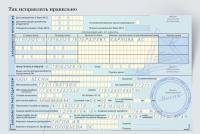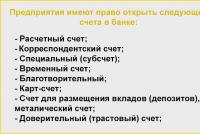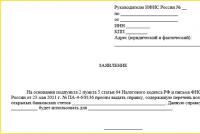How to correctly flash documents before submitting them to the archive or to the tax office
A single instruction for stapling documents has not been developed. But recommendations for filing cases are contained in the Methodological Recommendations of the Federal Archives, the order of the Ministry of Culture of Russia for 2005 No. 536, the instructions of the Central Bank on document management and in GOST 51141, which regulate the rules for storing documents.
Consider the basic principles of proper stitching of various documents.
Cover
Before flashing documents, you should think about a cardboard cover for each folder. They are:
The information on the cover is:
- Name of the organization.
- The name of the department of the organization (for example, the human resources department).
- Case index.
- Case title.
- Shelf life.
- Volume number.
- The number of sheets in the binder.
- Date of compilation of the binder.
inventory
Each set of documents is supplied with an inventory. It contains information:
- Document's name.
- Binder date.
- Shelf life.
- Annotation (that is, an explanation of what is contained in the document and why it is necessary to store it).
- List of all documents included in the binder, indicating the pages in each document.
- Data of the responsible person - the compiler of the binder.
When numbering, the inventory is not taken into account. The inventory can be filed in a common folder, can be pasted into the cover or stored separately. But clerks still prefer to flash it: the probability of its safety is higher.
Sheet numbering
Numbering is affixed Arabic numerals(in rare cases - Roman), ascending. Usually, numbering is not difficult, but a number of subtleties must be taken into account:
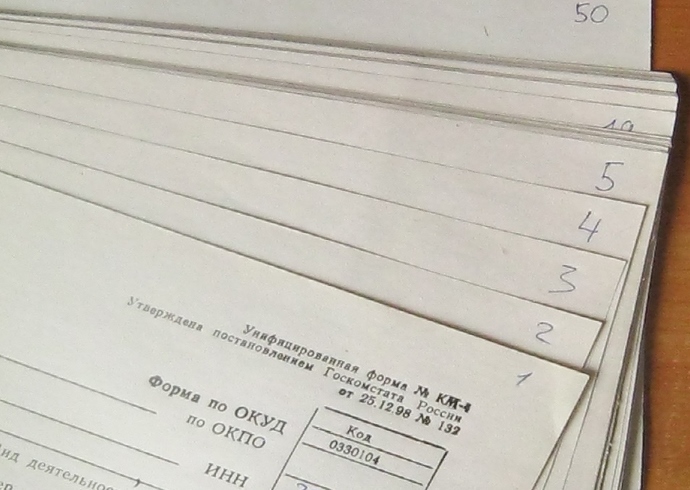
Ways to flash documents
There are several ways to bind documents:
- With a needle and thread. Suitable for small documents. Stitching is done in two punctures, on the back the ends of the thread are fastened together. A piece of paper with a confirmation inscription and a seal is attached to the thread.
- With thread and a hole punch. The method is similar to the previous one, but this way you can fasten a larger case at a time. The cover is usually not affected.
- With a drill or screwdriver. In this way, large-scale cases are sewn together. A thick rope or cord can be used as a thread. Also, this method is used if it is necessary to sew the case together with the cover.
- With the help of a binding machine and an autonumberer. This method is available only in printing houses.
The logs of work books must be sealed with a seal before stapling.
Photo instructions for flashing documents with threads
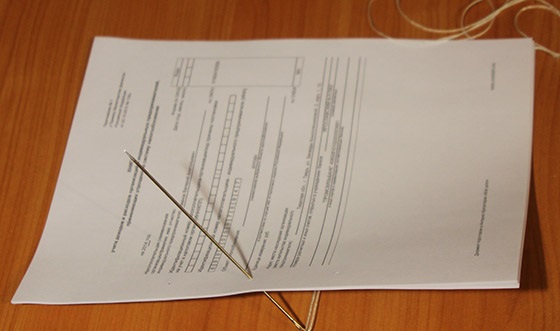
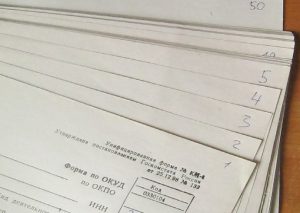


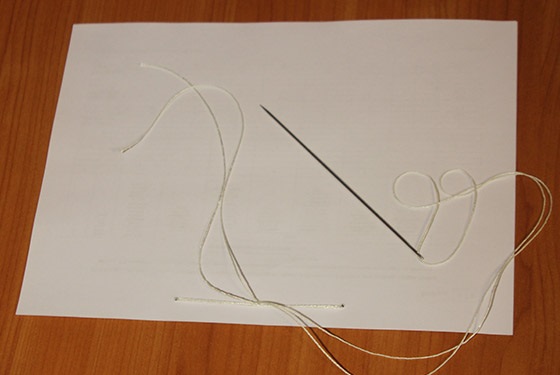
General scheme of document firmware

How to flash documents for archive
 Documents must be handed over to the archive of the enterprise a year after they are completed in office work. After they are stored for a certain time in the organization, they must be transferred to the state, regional or municipal archive. The deadlines are as follows:
Documents must be handed over to the archive of the enterprise a year after they are completed in office work. After they are stored for a certain time in the organization, they must be transferred to the state, regional or municipal archive. The deadlines are as follows:
- 75 years - for documents on personnel, household books, records of notarial acts and a number of others.
- 20 years - for capital construction projects, technological and design documentation, patents.
- 15 years for scientific documentation.
- 5 years - for film documents.
- 3 years - for video and photo documents.
Documents are handed over to the archive by employees of the document management service. If there is no such specific unit in the organization, then the secretary, a personnel service specialist or deputy head, in rare cases, an accountant, is in charge of the archive.
Before preparing documents for the archive, it is necessary to find a suitable cover for them and add additional information to the inventory, such as:
- The date of the inventory.
- Volume number (if the case consists of several volumes).
- Surname and position of the inventor.
The execution of the case itself consists of the following stages:
- Control of the grouping of documents in the case.
- Filing.
- Sheet numbering.
- Fixing and drawing up a confirmation inscription with a seal.
- Compiling a case description.
Video: How to flash documents for archive
How to flash documents for tax
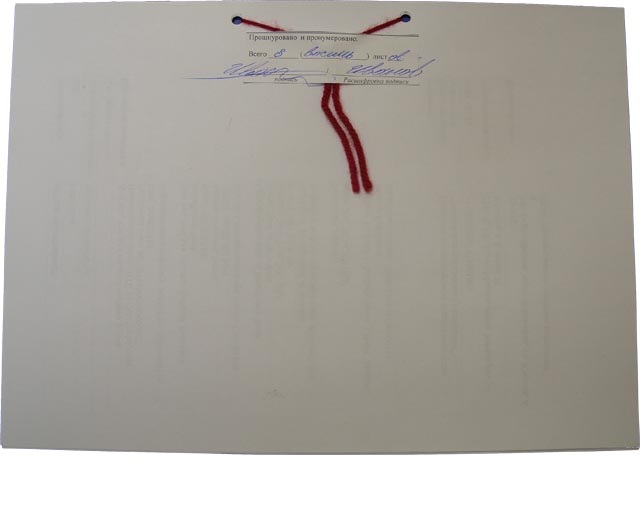
The firmware of documents for the tax service is slightly different from the firmware of documents for the archive. Its features are:
- Documents are fastened in 3 punctures, the distance between them is not less than 3 cm.
- The case can be sewn with a sewing needle with threads, bank twine or nylon thread.
- Documents must be sealed by sticking 3x5 cm paper on the knot. The ends of the threads must remain free.
- On the sticker is a confirmation inscription with a seal.
- Accounting reports need to be sewn into 5 holes, the knot is pasted over with tissue paper.
In July 2013, the fiscal service clarified that applications and constituent documents are allowed to be submitted unfiled.
Video: How to properly flash documents for tax
Certification inscription
It is done after all documents are filed and numbered. It is a piece of paper 5x6 centimeters. The inscription is glued on the back of the last sheet in such a way as to fix the knot of the thread that holds the case together.
It states:
- The number of sheets in the file (in numbers and in words).
- Features of nested documents (for example, if some of them are torn).
- Surname, position and signature of the compiler of the file.
The company's seal is put on the inscription so that its imprint was both on the sticker (that is, on the inscription itself) and on the sheet.
How to fix bugs
The main requirement for filed documents is inviolability. If an inaccuracy is made somewhere - for example, they forgot to attach a document, then it is necessary either to file it as a separate volume, or to disassemble the whole file and reflash it again. No attachments or additions are allowed in the bound case.
If errors occurred in the numbering, then the use of lettered numbering is allowed. This means that the same number is put on the missing sheet, but a letter is added to it, for example: 15, 16, 16a, 16b, 17 ...
If the numbering is broken more seriously, then it will have to be done again. To do this, you must carefully cross out the incorrectly affixed numbers and enter new ones.
Changes will also need to be made to the certification inscription: cross out the old data, and put the new ones next to it.

